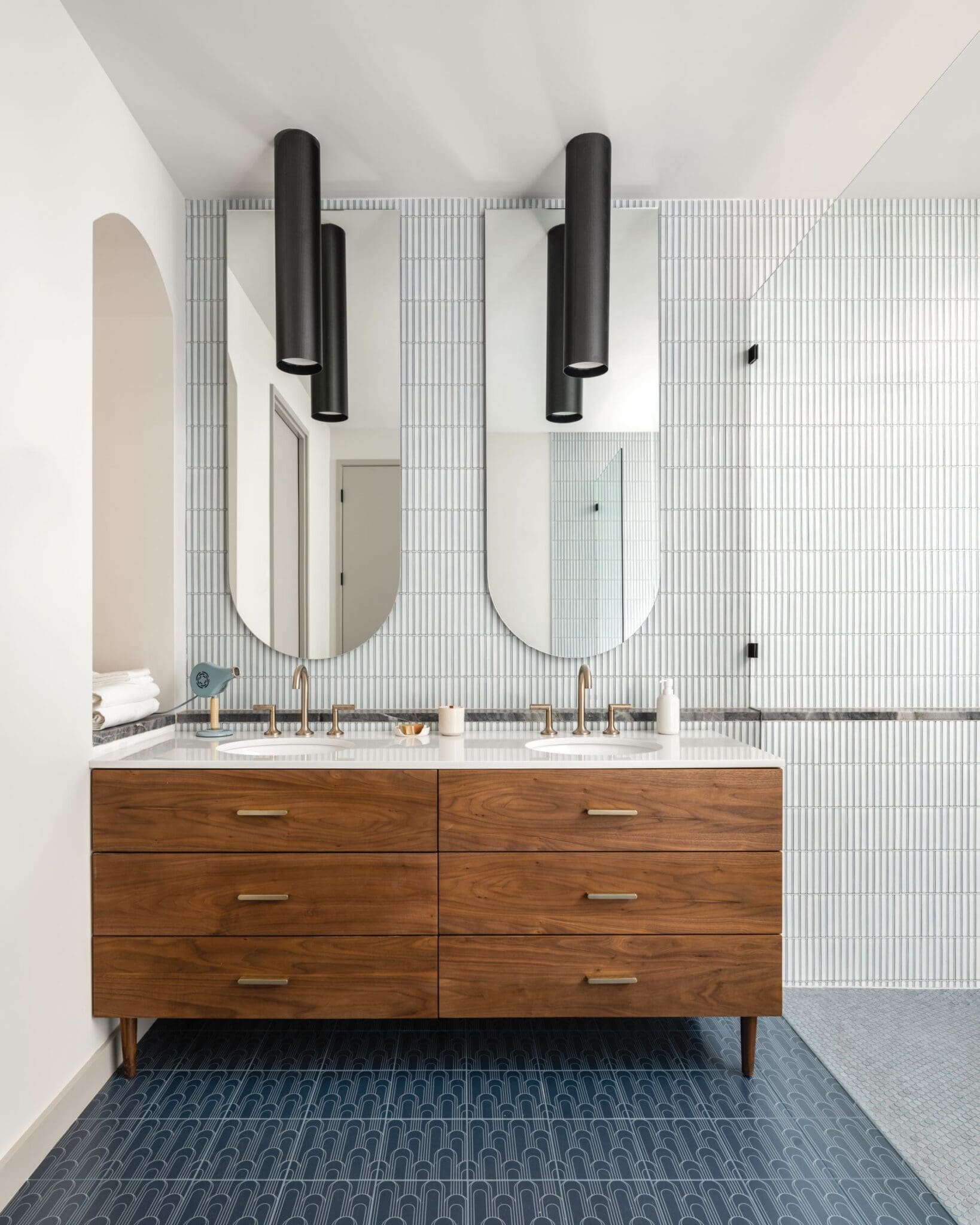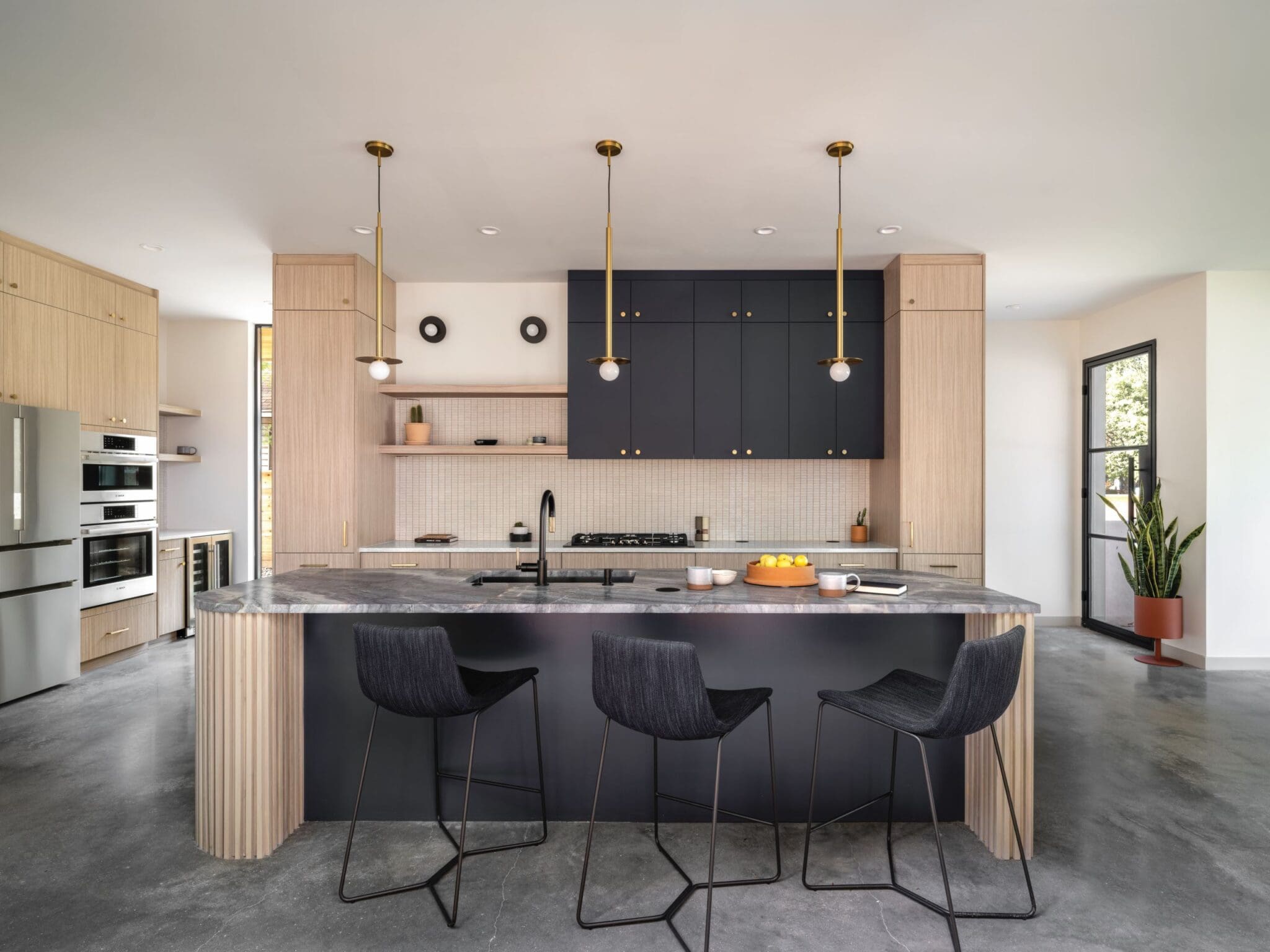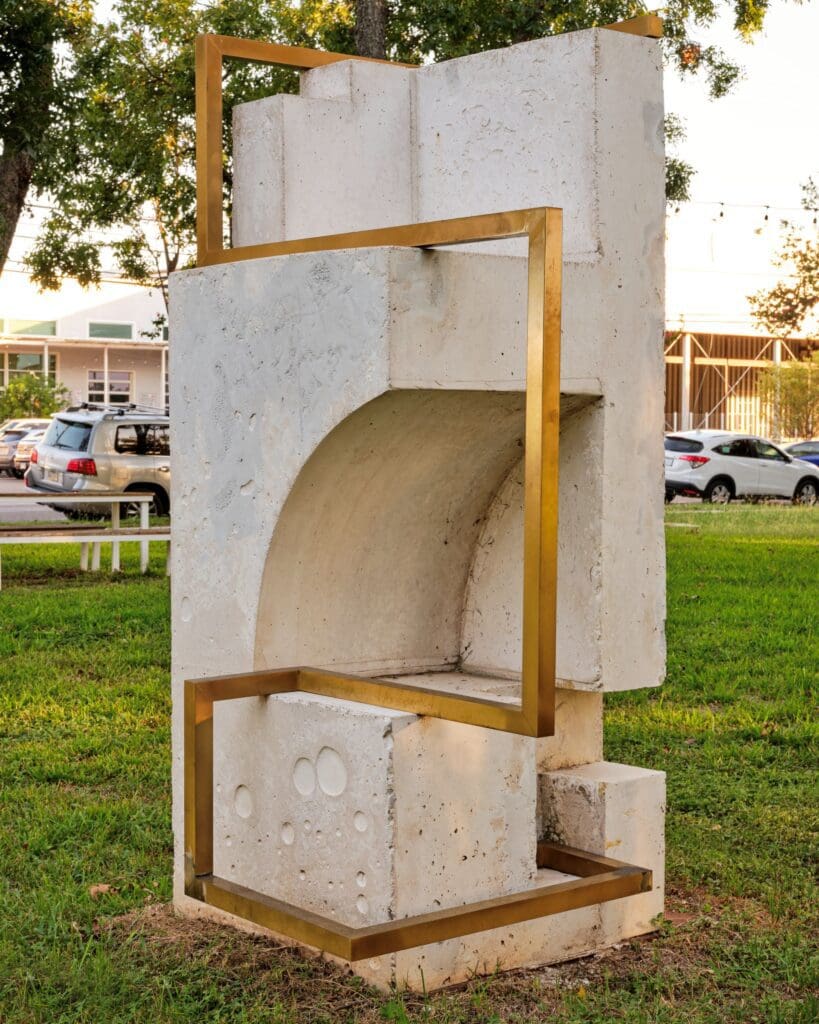Occupiable Art



Words Janine Stankus | Photos Leonid Furmansky
Balancing Aesthetics and Humanism
If anything is evidence of East Austin’s changing identity, it’s the smattering of modern, multi-story monoliths that have cropped up among rows of traditional, single-story bungalows. But the local team at CoXist Studio is not about maximizing square footage for the sake of a sale. Their thoughtful approach to design fuses art, environment, and a fastidious attention to lived experiences.
The Sculpture Residence is simply, but aptly, named “occupiable art,” according to Megan Lin, co-founder of CoXist Studio along with her partner Frank Lin. The multi-dimensional, two-story home abuts Govalle’s grassy sculpture park, where Tom Bandage’s sculpture, “Functor No. 4,” first spoke to them.
“From one angle, it appears one way, and then as you walk around another side, it appears a different way,” Megan recalls her first experience with the artwork. “You can see some curves cut out, but it’s still rectilinear.” She explains, “We wanted the house to reflect the methodology of that design.”

Sourcing inspiration from the sculpture was actually the idea of builder Sharad Mudhol, long-time collaborator with Frank and Megan. After securing the lot, he entrusted them completely with the design—with only one caveat: to bring some element of the park into the house.
Megan and Frank set out to design something that felt in conversation with Tom’s sculpture and the neighborhood itself. The smooth stucco facade reflects the work’s alternating curves and angles, with jutting balconies and impressively executed cantilevers that create similar cutout effects. Batten details add texture to the facade and an extra three-dimensional element to play with light and shadow. Sweeping glass panes create openness to the structure, inviting the outside in.
The language of curves and angles abound inside the home—from the round and angled edges of the gold-veined quartzite kitchen island top to cathedral-like windows (flipped both ways) that appear in almost every room. In the living area, a wall with no edges is smoothly executed so that the space feels almost infinite. The curves and angles extend from mirrors to light fixtures to the smooth-stoned terrazzo contrasted by a rectangular backsplash in the bathrooms.
The repetition of these design motifs is not just an aesthetic fixation but also the thread tying together an entire narrative. Megan and Frank focused on how spaces flow throughout the house. Megan emphasizes, “We always say it’s like a series of events that come together to tell a story. So as you walk through this house, every time you turn and look at something, it’s a view outside, which is a very humanistic way of pulling things in.”
Contrast is another device they employ to humanize the space: smooth verses textured surfaces, shiny verses matte finishes, and dark combined with light color palates. “If everything’s all the same tone, the same color, the house is going to feel very sterile and cold,” explains Frank. “We try to select every material with balance and contrast, so that it embodies that humanistic feel.”
Even mundane details—like where the sink is in relation to the garbage and the dishwasher—are thought through with intention. It’s those little things that can make a space so much more pleasant and functional. Because at the end of the day, says Megan, “We’re not [just] building houses, we’re building homes. And we always think about memory-making. This wonderful opportunity to have an impact at that level [of detail] is why we love what we do.”
Contact:
1101 Navasota St., Ste. #3
coxiststudio.com
@coexist_studio










